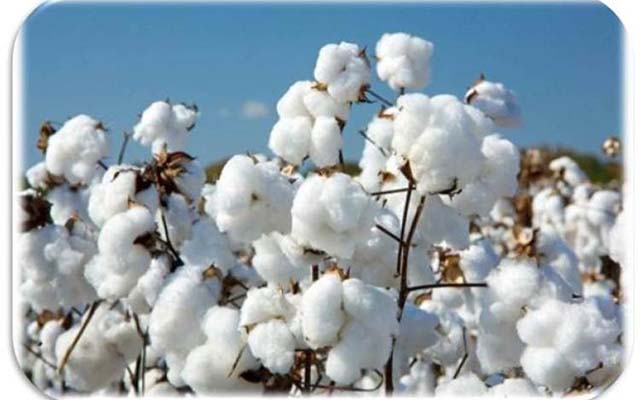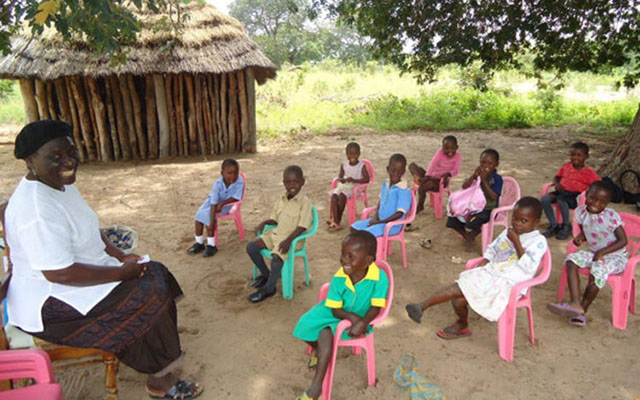Fears heighten over cotton side marketing


Government is spending close to $50 million to finance the cotton crop
Martin Kadzere Senior Business Reporter
SOME private companies might have over stated cotton inputs they gave to farmers to obtain buying licenses, The Herald Business has leant.
Information obtained from various common distribution points in most cotton growing areas shows that the actual inputs distributed by most private companies could be way below what was declared to the Agriculture and Marketing Authority and the mismatch could point to possible connivance between AMA officials and private merchants.
AMA issues buying licences, based on what merchants would have contributed towards production.
Government is spending close to $50 million to finance the cotton crop but concerns are growing that the bulk of the crop could end up in the hands of private players.
For instance, in the previous season the Government invested $26 million towards cotton production and the bulk of the crop was meant to be purchased by the Cotton Company of Zimbabwe, which was taken over by the State. Instead, Cottco only purchased about 10 million kgs from the total crop production of 30 million kgs.
“Sustainable production of cotton in Zimbabwe is dependent on the existence of the viable investment model,” analyst Nhamo Muchapondwa said. “Government efforts to revive cotton production through inputs subsidies are commendable. However, the free input scheme has a limited window of three years. Who finances the crop thereafter?
“In view of the extent of side marketing in the sector, private sector investment has remained at very low levels. Currently the bulk of the crop is being funded by the Government but as a result of weak legislative enforcement when it comes to marketing, private players end up buying the crop at the expense of the Government.
“Clearly, this is not a sustainable production model,” Mr Muchapondwa said, adding the decline in cotton production in the recent years was attributed to a failed contract farming model.
In stark contrast, the growth of tobacco has been driven by a successful contract farming model resulting in about 82 percent of the crop being produced under contract farming.
Based on figures collected at some common distribution points, Cottco is enjoying over 95 percent of the market share based on the value of inputs disbursed to farmers.
Unlike some private companies, which are mainly distributing seed, only, Cottco has provided a full input package including fertilisers and an assortment of chemicals.
For instance, in some parts of Manicaland and the Lowveld region Cottco distributed about 1 200 tonnes of seed while the only competitor ETG Parrogate distributed 138 tonnes.
According to the figures, Cottco disbursed about 6 000 tonnes of fertilisers while ETG provided nothing. In parts of Mashonaland East, Central and West, Cottco disbursed 1 443 tonnes of seed while five private companies distributed about 500 tonnes.
In some parts of Midlands, Cottco distributed just over 3 000t of seed and close to 14 000 tonnes of fertilisers. Private players disbursed a total of 1 357 tonnes. In Manicaland, Masvingo and Mashonaland provinces (East, West and Central) there were no meaningful disbursements of fertilisers and chemicals from the private players.
Ironically, Olam, which wanted a Cottco management last year failed to offer a meaningful inputs package.
In the past two weeks, this newspaper has been trying to obtain figures from AMA chief executive Mr Rockie Mutenha on inputs declared by the cotton merchants, but to no avail.
But sources within AMA confirmed serious discrepancies. For instance, figures from the ground show that ETG disbursed 180 tonnes in Masvingo and Manicaland, but declared 400 tonnes.
“The private players are inflating the figures over and above failure to provide adequate agronomy support,” said one official at AMA who requested not to be named.
“That kind of cosmetic financing is only done to make them eligible for obtaining licenses.”
Quton executive director Mr Edworks Mhandu said the 6 000 tonnes of seed distributed by the company was for the Government programme, suggesting the little volumes distributed by private merchants were left-overs from the previous season.
“It is only Cottco which bought the seed and there is absolutely no way anyone would claim to have supported meaningful production this season,” said Mr Mhandu.
In the absence of political will to resolve the perennial regulatory challenges afflicting cotton marketing, there is need to look at alternative production models and return to a state monopoly is an option that needs to be closely evaluated, analysts said.
Former Cottco managing director Mr Happymore Mapara said Government should ensure adequate resources are available to buy the crop to eliminate chances of side marketing.
Farmers are expected to produce at least 110 million kgs this season. The inputs subsidies also mean farmers already have 17c per kg margin guaranteed and Government has promised to pay up to 55c per kg during the next marketing season.










Comments